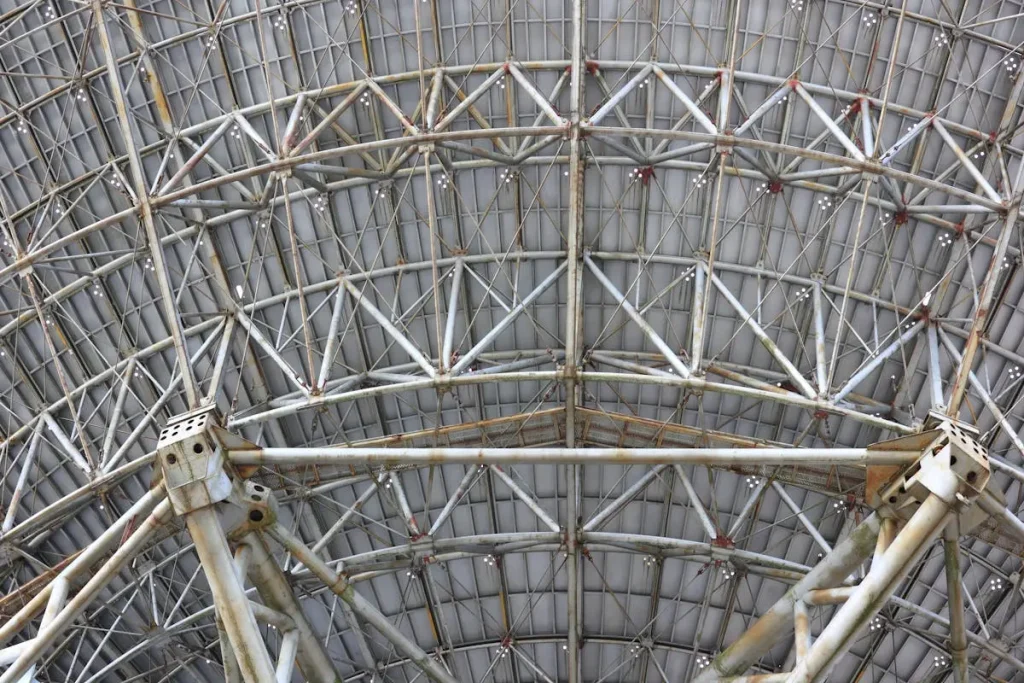What is sustainable metal roofing?
Sustainable metal roofing is an environmentally friendly option for buildings. It is made from recycled materials like aluminum or steel, which are durable and can be reused. Metal roofs can help reduce energy costs by reflecting the sun’s heat away from the building. They are also long-lasting, with some lasting up to 50 years or more. Metal roofs are a popular choice for eco-conscious construction due to their energy efficiency and recyclability.

Benefits of sustainable metal roofing
Metal roofing is a sustainable choice because it is long-lasting and recyclable. Metal roofs can last 50 years or more, which is significantly longer than traditional asphalt roofs. They are also environmentally friendly since they can be recycled at the end of their life cycle. Additionally, metal roofs are energy efficient, reflecting sunlight to keep your home cooler and reduce energy costs. Some benefits of sustainable metal roofing include durability, recyclability, and energy efficiency.
Environmental impact of sustainable metal roofing
Metal roofing is considered eco-friendly because it’s often made from recycled materials and can be recycled at the end of its lifespan. Traditional asphalt shingles contribute to millions of tons of waste in landfills each year, but metal roofing is a more sustainable option. Additionally, metal roofs can be energy-efficient, reflecting sunlight to reduce cooling costs in hot climates. Some metal roofs are ENERGY STAR® certified, which means they meet specific energy efficiency criteria set by the Environmental Protection Agency.
Durability and longevity of sustainable metal roofing
Sustainable metal roofing is renowned for its exceptional durability and longevity. Metal roofs can last up to 50 years or more, outperforming traditional roofing materials like asphalt shingles. The durability of metal roofing is attributed to its resistance to elements such as fire, wind, and snow. Additionally, metal roofs require minimal maintenance, saving you time and money in the long run. Investing in sustainable metal roofing ensures a reliable and long-lasting solution for eco-conscious construction projects.
Types of sustainable metal roofing materials
The most common types of sustainable metal roofing materials include aluminum, steel, copper, and zinc. Each material has its unique qualities and benefits for eco-friendly construction. Aluminum is lightweight and resistant to corrosion, steel is durable and recyclable, copper is long-lasting and develops a natural patina over time, and zinc is known for its malleability and ability to self-heal scratches. Aluminum and steel are the most widely used options due to their affordability and availability, while copper and zinc are premium choices for those seeking a more distinctive and long-lasting roofing solution.
Installation process of sustainable metal roofing
During the installation of sustainable metal roofing, the existing roof will be thoroughly inspected to ensure a proper foundation. The installation process involves securing the metal panels to the roof structure using fasteners. Waterproofing measures are then applied to prevent leaks and ensure durability. Lastly, the finishing touches are added to enhance the roof’s appearance and functionality, providing a long-lasting and environmentally friendly roofing solution.
Cost comparison with traditional roofing methods
Metal roofing may require a higher upfront cost compared to traditional roofing materials like asphalt shingles. However, it’s important to consider the long-term benefits. Metal roofs can last 50 years or more, while asphalt shingles typically last between 15 to 30 years. Additionally, metal roofs are more durable and require less maintenance over time, potentially saving you money in the long run. Installation costs can vary, but metal roofs usually have a longer lifespan, making them a cost-effective and sustainable choice for eco-conscious construction projects.
Maintenance and upkeep of sustainable metal roofing
To maintain sustainable metal roofing, regular inspection and cleaning are essential. Check for any signs of damage, such as loose screws or dents, and promptly address them to prevent further issues. Keep the roof clear of debris like leaves and branches that can accumulate and cause drainage problems. Cleaning with a gentle solution of water and mild soap can help maintain the roof’s appearance and prevent corrosion. Consider scheduling professional inspections every few years to ensure the roof remains in good condition and to address any potential issues early on. Regular maintenance will help prolong the lifespan of your sustainable metal roof and ensure its eco-friendly benefits continue for years to come.
Energy efficiency of sustainable metal roofing
Sustainable metal roofing helps reduce energy costs due to its ability to reflect sunlight and reduce heat absorption in buildings. This means less reliance on air conditioning to cool the interior, leading to potential savings on electricity bills. Metal roofs can also be integrated with solar panels to further enhance energy efficiency in homes and commercial buildings.
Conclusion: Embracing the future of eco-conscious construction
By choosing sustainable metal roofing for your construction projects, you are making a positive impact on the environment. Metal roofs are durable and can last for decades, reducing the need for frequent replacements. They are also energy-efficient, helping you save on heating and cooling costs in the long run. Embrace the future of eco-conscious construction by considering sustainable metal roofing as a reliable and environmentally friendly option for your building projects.
